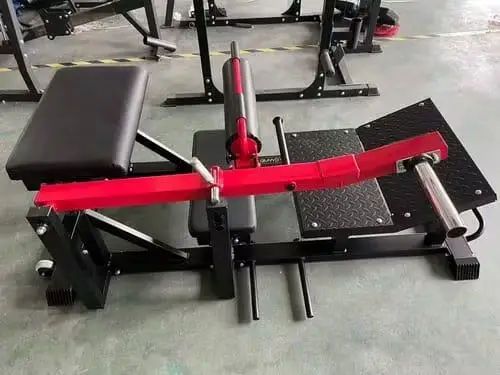The Latin America wearable medical devices market is showing significant growth, driven by the region’s rising burden of chronic diseases, advancements in sensor technologies, and an increasing trend toward fitness and wellness. In 2023, the market reached a value of approximately USD 898.99 million and is projected to grow at a compound annual growth rate (CAGR) of 16.70% during the forecast period of 2024 to 2032, hitting USD 3,609.03 million by 2032. Major players in this market include STMicroelectronics N.V., Infineon Technologies AG, Omron Corporation, and Texas Instruments Incorporated.
1. Market Overview
The wearable medical devices market in Latin America is part of the broader global movement towards integrating technology with healthcare. With the increasing adoption of digital solutions, wearable devices are becoming an essential tool for monitoring various health parameters in real-time. These devices are designed to track physical activity, monitor vital signs, and even administer treatments, playing a vital role in preventive healthcare and disease management.
1.1 Chronic Disease Burden The region has been experiencing an increase in chronic diseases, such as diabetes, cardiovascular diseases, and hypertension. These health conditions require constant monitoring, and wearable devices provide a convenient solution for patients. The devices offer continuous data collection, which can be shared with healthcare providers to facilitate timely interventions, reducing the risk of complications and hospitalizations.
1.2 Fitness and Wellness Trend Wearable medical devices are also benefiting from the growing trend towards fitness and wellness in Latin America. Consumers are becoming more health-conscious and seeking products that help them lead healthier lifestyles. Devices that monitor heart rate, sleep patterns, and physical activity are in high demand, particularly among younger populations interested in fitness and sports.
1.3 Technological Advancements in Sensors The market is further driven by the significant advancements in sensor technologies. Sensors in wearable devices have become more accurate and efficient, enabling the real-time tracking of various health metrics. The ability to seamlessly integrate these sensors with mobile apps and cloud platforms allows users and healthcare providers to access data easily, leading to better healthcare outcomes.
Get a Free Sample Report with Table of Contents
2. Key Drivers of Growth
The market’s expansion is primarily fueled by several factors that are changing the healthcare landscape in Latin America.
2.1 Rising Adoption of Remote Monitoring With an increasing focus on remote healthcare solutions, wearable medical devices have gained popularity for their ability to monitor patients’ health without the need for frequent hospital visits. This is particularly beneficial for managing chronic diseases, as continuous monitoring helps in early detection and timely treatment. Governments and healthcare providers are encouraging the adoption of such technologies to reduce the burden on healthcare facilities.
2.2 Increased Consumer Awareness Consumer awareness regarding personal health and wellness is on the rise in Latin America. With access to better information through online platforms and social media, people are more inclined to use wearable devices for monitoring their health. This growing demand is being met by a wide range of wearable products, from fitness trackers to advanced medical devices for heart monitoring, sleep apnea, and more.
2.3 Affordability and Accessibility Wearable medical devices are becoming more affordable and accessible, thanks to technological advancements and increased competition among manufacturers. As prices continue to decrease, more people in Latin America are able to purchase and use these devices. This trend is expected to continue, especially as manufacturers target middle-income consumers with affordable yet highly functional products.
3. Competitive Landscape
Several major players are driving innovation and growth in the Latin America wearable medical devices market. Key companies include:
3.1 STMicroelectronics N.V. STMicroelectronics is a global leader in the semiconductor industry, producing components that are integral to wearable medical devices. The company’s sensors and microcontrollers are used in devices that monitor health metrics, providing accuracy and reliability. Its focus on research and development allows for constant improvements in the functionality of wearable technologies.
3.2 Infineon Technologies AG Infineon is another prominent player in the market, known for its expertise in sensor technologies and microelectronics. The company’s sensors are designed to be energy-efficient, which is crucial for wearable devices that need to operate for extended periods without requiring frequent recharging. Infineon’s contributions to the market include components that enhance the capabilities of medical wearables in monitoring vitals such as heart rate and blood oxygen levels.
3.3 Omron Corporation Omron is a well-established company in the healthcare industry, producing a range of medical devices, including wearable blood pressure monitors and heart rate sensors. The company’s devices are widely used for managing chronic diseases, particularly in regions where healthcare access is limited. Omron’s commitment to innovation has made it a trusted brand for consumers and healthcare professionals alike.
3.4 Texas Instruments Incorporated Texas Instruments is a key player in the market, offering microchips and components that power wearable medical devices. The company’s advanced technologies support wireless communication between devices and mobile apps, enabling real-time data transfer. This is essential for remote monitoring and telemedicine, two growing areas within the Latin America healthcare system.
4. Challenges and Opportunities
While the Latin America wearable medical devices market is expanding rapidly, it also faces several challenges.
4.1 Regulatory Barriers One of the main challenges in the market is navigating the regulatory landscape. Each country in Latin America has its own set of rules for medical devices, and this can be a barrier for companies looking to introduce new products. Harmonizing regulations across the region could accelerate market growth and make it easier for companies to operate.
4.2 Data Privacy Concerns As wearable devices collect vast amounts of personal health data, there are growing concerns about data privacy and security. Consumers are increasingly wary of how their data is being used and stored. Companies need to invest in robust data protection measures to gain consumer trust and comply with regulatory requirements related to health data.
4.3 Infrastructure Limitations In some parts of Latin America, the infrastructure needed to support advanced medical devices is lacking. Limited access to high-speed internet, particularly in rural areas, can hinder the adoption of connected devices that require continuous data transmission. However, this also presents an opportunity for governments and private sector companies to invest in infrastructure improvements.
5. Future Outlook
The future of the wearable medical devices market in Latin America looks promising, with several trends expected to shape its growth.
5.1 Expansion of Telemedicine The COVID-19 pandemic has accelerated the adoption of telemedicine, and wearable medical devices are playing a crucial role in this shift. By enabling remote monitoring, these devices allow healthcare providers to offer care without requiring patients to visit hospitals or clinics. This trend is expected to continue, particularly as more advanced devices become available.
5.2 Integration with Artificial Intelligence (AI) AI is becoming increasingly integrated with wearable medical devices, allowing for more sophisticated data analysis and predictive healthcare. Devices that can alert users and healthcare providers to potential health risks in real-time are expected to become more common, improving patient outcomes and reducing healthcare costs.
5.3 Wearable Medical Devices for Older Adults As Latin America’s population ages, there is a growing need for devices that cater to older adults. Wearable medical devices that monitor vital signs and detect falls are particularly important for this demographic, as they can improve the quality of life and offer peace of mind for caregivers.





